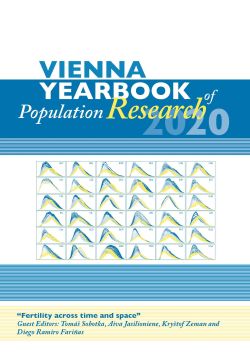
Vienna Yearbook of Population Research 2020, pp. 237-263, 2020/12/29
Fertility across time and space

Using digital traces to investigate demographic behaviours, I leverage in this paper aggregated web search data to develop a Future Orientation Index for 200 countries and territories across the world. This index is expressed as the ratio of Google search volumes for ‘next year’ (e.g., 2021) to search volumes for ‘current year’ (e.g., 2020), adjusted for country-level internet penetration rates. I show that countries with lower levels of future orientation also have higher levels of fertility. Fertility rates decrease quickly as future orientation levels increase; but at the highest levels of future orientation, this correlation flattens out. Theoretically, I reconstruct the role that varying degrees of future orientation might play in fertility decisions by incorporating advances in behavioural economics into a traditional quantity-quality framework à la Becker.
Keywords: future orientation; total fertility rate; hyperbolic discounting; quantityquality trade-off; digital trace data; Google trends; digital demography